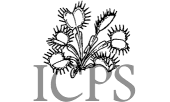|
Carnivorous Plant Newsletter
Volume 37, Number 3, September 2008, pages 90 - 93, back cover
Technical Refereed Contribution
Pinguicula lithophytica C. Panfet-Valdés & P. Temple
(Lentibulariaceae Rich.), a new species from
the central region of Cuba
Cristina M. Panfet-Valdés • Jardin Botanico Nacional de Cuba • Ciudad de La Habana • Cuba
Paul Temple • Constanza • Dominican Republic
Keywords: New taxa: Cuba, Pinguicula lithophytica.
Received: 13 July 2007.
Abstract
This paper describes and illustrates a new species of Pinguicula L. from the central region of Cuba: Pinguicula lithophytica C. Panfet-Valdés & P. Temple. The new species is included in the section Agnata, subgenus Isoloba, with morphological relationship to Pinguicula jackii Barnhart. This is only the second species of Pinguicula to have been found in the Macizo mountains of the Escambray, in Cienfuegos Province, growing on calcareous rock at an altitude exceeding 600 metres above sea level.
Introduction
A previous reference to this species exists within the original description of P. jackii Barnhart (Barnhart, 1931). The author made reference to “two species” that were found in Santa Clara Province, Cuba, one of which was P. jackii and the other of which he described as “probably merely the long-known P. albida of Wright, but with the white corollas sometimes showing a narrow margin of color”. There is no evidence that P. albida, typically a lowland species, does or can live at the relatively high (for the Caribbean) altitude at which P. jackii is found, P. albida requiring high day and night temperatures and high humidity at all times during the annual’s short life.
Between 1995 and 1997 various expeditions were mounted into different regions of Cuba to study the carnivorous plants of that country (Temple & Panfet-Valdés 1998). Prior to the expeditions, the herbarium of the National Botanic Gardens in Havana was searched for evidence of herbarium vouchers referencing material of Pinguicula, as well as other carnivorous genera, but few records were found, in particular very few for P. jackii. None of the few herbarium vouchers that were found for P. jackii were recent. Therefore, one motive for mounting the expeditions was to relocate Pinguicula jackii. While searching areas likely to support P. jackii, we were surprised to encounter a Pinguicula that did not correspond to the characteristics of P. jackii and which we considered to be a new species (see Figures 2, 3). This is probably the same species that Barnhart referred to but which he never described and for which herbarium vouchers are not known to exist.
This new species is remarkable for the presence of glandular hairs on the underside of the leaves (see Back Cover), a feature shared with few other Pinguicula species.
Pinguicula lithophytica C. Panfet-Valdés & P. Temple, spec. nov.
Herba annua vel biennis. Rhizoma simplex brevis radicibus adventitiis filiformibus. Folia 7-12, rosulam basalem 10-14 cm diametro in solo adpressam formantia, carnosa, 5-7 cm longa, 3-4 cm lata, pallida flavoviridia, obovata, ad apicem obtusa vel rotundata, cuneata basi, pagina superiore pilis glanduliferis sessilis vel stipitatis dense tecta, pagina inferiore pilis glanduliferis stipitatis parce tecta, margine integerrimo, involuto. Scapi 1-3, erecti, 3-14 cm alti, pallidi flavo-virides, pilis glanduliferis stipitatis tecti, flore solitario. Flos 1-1.5 cm longus (calcari incluso), pallidus flavo-virens, bilabiatus. Calyx 0.2-0.4 cm longus, lobis oblongatis, ad apicem obtusis, pilis glanduliferis stipitatis tectis non nisi extus. Corolla 2 cm diametro, campanulata, alba sed inter bases loborum et calcaris lutea, lineis longitudinalibus brunneis ad calcarem evanidis, palato carens; labio inferiore profunde trilobo, lobi suborbiculari vel spathulato rotundato ad apicem, inferiore medio lobo majore quam duo aequalibus lobis lateralibus; lobi duo superiores quam lobi duo inferiores laterales grandiores, suborbiculares vel late obovati, faux tubusque corollae interior pilis cylindricis pluricellulis dense tecti pilis claviformis cylindricis basi conicis amplitudine numeroque versus calcar decrescentibus mixtis, calcar trichomatibus capitatis cellulus basalibus elongates. Calcar 0.5 cm longum, cylindricum, descendens, complanatum plus minusve dorso-ventraliter, bifidum plus minusve, ad apicem rotundum, pilis glanduliferis stipitatis ad apicem dispersis, pagina scapum adversa pilis carens, tubo corollae angulum obtusum (ad 110°-120°) faciens. Stamina curva, duobus filamentis complanatis. Ovarium ovoideum. Stigma bilabiata, inferiore labio quam superiore labio majore, crenata. Capsula ovoidea. Semina numerosa.
Perennial herb1, rhizome short, with filiform adventitious roots; leaves 7-12, fleshy, 5-7 × 3-4 cm, pale green-yellowish, obovate, obtuse with rounded apex, base cuneate, upper surface densely covered with sessile and stalked glandular hairs, lower surface sparsely covered with stalked glandular hairs, margin entire, involute, forming a basal rosette of 10-14 cm diameter, lying flat on the ground. Scapes 1-3, erect, 3-14 cm tall, pale green-yellowish, covered with stalked hairy glands, one-flowered. Flower 1-1.5 cm long (spur included), pale green-yellowish, two lipped. Calyx 0.2-0.4cm long, lobes oblong, apex obtuse, covered with stalked glandular hairs only on the outer face. Corolla 2 cm diameter, bell-like, white, yellow between lobe bases and spur, with longitudinal brown lines fading toward the spur, without a palate; deeply trilobed inferior lip, suborbicular to spatulate, rounded at apex, lower central lobe larger than the two equal lateral lobes; bilobed upper lip, upper two lobes larger than the lower two lateral lobes, suborbicular to widely obovate, throat and internal half of corolla tube densely covered with cylindrical pluricellular hairs, mixed with claviform cylindrical hairs with conical base that diminish in size and decrease in numbers towards the spur. Spur 0.5 cm long, descendent, cylindrical, slightly dorso-ventrally flattened, slightly bifid, apex rounded, forming an obtuse angle (110-120°) with relation to the tube of the corolla, with dispersed stalked glandular hairs towards the apex, hairs absent on the face opposing the scape, with capitate trichomas the basal cells of which are elongated. Stamens, curved, with two flattened filaments. Ovary ovoid. Stigma bilabial, inferior lip greater than the superior one, crenate. Capsule ovoid. Seeds numerous.
1Pinguicula lithophytica is described as a short lived perennial. However, further studies will be necessary to determine if the plant is such or an annual/biennual.
Holotype: Cuba. Cienfuegos. San Blas, El Sopapo, Los Tornos. C. Panfet, P. Temple, J. Gutiérrez. No. 71790. (HAJB). 28 February 1995.
Taxonomy: In accordance with Casper (1966), this species belongs in the section Homophyllum, of the subgenus Pinguicula. According to a phylogenetic restructuring by Cieslak et al. (2005), the new species would be assigned to section Agnata, subgenus Isoloba. Pinguicula lithophytica C. Panfet & P. Temple is closely related to but is not a variety of P. jackii Barnhart as demonstrated by the features that are compared in Table 1.
Distribution: Endemic. Central Cuba, located in the province of Cienfuegos, in the Macizo Mountains of the Escambray (see Figure 1).
Habitat: Generally growing on almost vertical slopes of calcareous rock that are the remains of elevated Karst formations, very degraded and eroded by seeping water, that had been semi-deciduous forest, with a northwest aspect, at an altitude of 725 metres above sea level.
Conservation concerns: The only known population of the plant occurs in an area that is surrounded by coffee cultivation and that has suffered much change as a result of human activity.
Etymology: This species has been given the name Pinguicula lithophytica because it grows on calcareous rock.
Acknowledgments: Cristina M. Panfet-Valdés’ contribution to this work was supported by Kew Latin America Research Fellowships KLARF (Programme), Andrew W. Mellon Latin America Botanical Fellowship (RBG Kew, UK), 2005. Paul Temple’s contribution to this work was assisted by the National Botanical Garden of Cuba and in particular by the Director, Doctor Angela Leiva Sanchez and her staff, especially for their assistance in enabling expeditions within Cuba. No plant material was removed and no wild locations were visited without all appropriate permissions, that were obtained by the National Botanical Garden of Cuba. All visits to wild locations were supervised by members of the National Botanical Garden of Cuba and, where necessary, by other officials. Both authors wish to also express their thanks to Barry Rice and to the referee of this paper for their assistance with its publication.
References
Barnhart, J.H. 1931. Pinguicula jackii. Addisonia 15, 4: 61-62. plate 511.
Casper, S.J. 1966. Monographie der Gattung Pinguicula L. Biblioth. Bot. 127/128: 1-209.
Cieslak, T., Polepalli, J.S., White, A., Müller, K., Borsch, T., Barthlott,W., Steiger, J., Marchant, A., and Legendre, L. 2005. Phylogenetic analysis of Pinguicula (Lentibulariaceae): chloroplast DNA sequences and morphology support several geographically distinct radiations. Am. J. of Bot. 92: 17223-1736.
Temple, P. and Panfet-Valdés, C. 1998. The Pinguicula of the Caribbean–Pp. 9-10 in: Schlauer, J. and Meyers-Rice, B. (eds.), Proc. Second Conf. ICPS, Bonn, Germany, 1998, ed. 2.–Bonn.
Table 1: A comparison of P. lithophytica and P. jackii.
|
P. lithophytica |
P. jackii |
Leaf form |
Obovate. |
Cuneate-obovate. |
Presence of leaf glands |
Both surfaces glandular-hairy. |
Only adaxial surface glandular-hairy. |
Lower corolla lobes |
Lobes non-overlapping. |
Lobes all of equal size. |
Corolla lobes colour |
White. |
Deep blue. |
Spur form |
Dorsiventrally flattened; cylindrical. |
Slender, obtuse, or emarginate. |
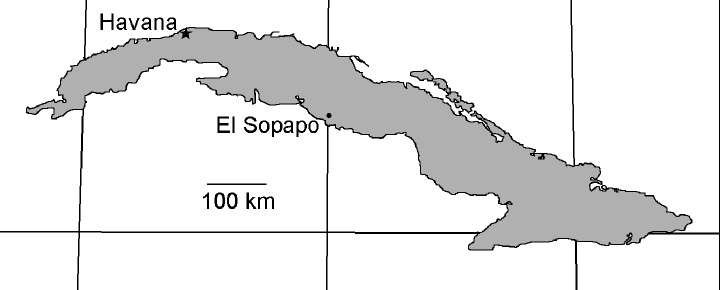
Figure 1: Map of Cuba, showing the El Sopapo collection site for Pinguicula lithophytica.
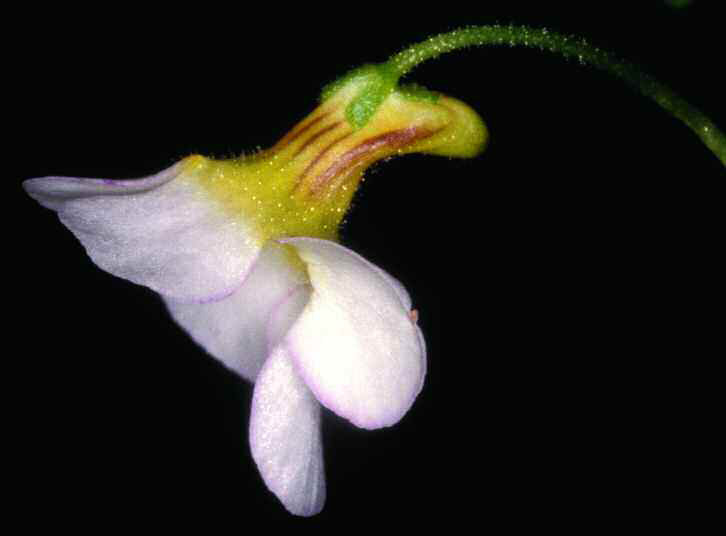
Figure 2: Profile view of Pinguicula lithophytica flower. Photograph by Paul Temple.
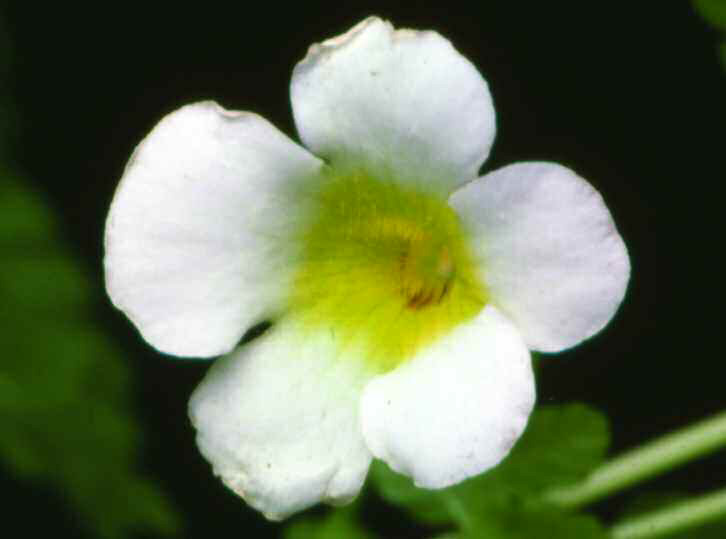
Figure 3: Front view of Pinguicula lithophytica flower. Photograph by Paul Temple.
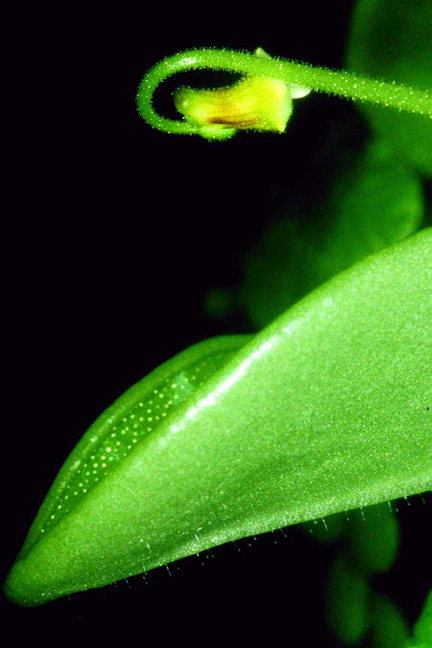
Back Cover: Leaf and developing flower of Pinguicula lithophytica. Note the glandular
hairs on the underside of the leaf. Photograph by Paul Temple.
|
